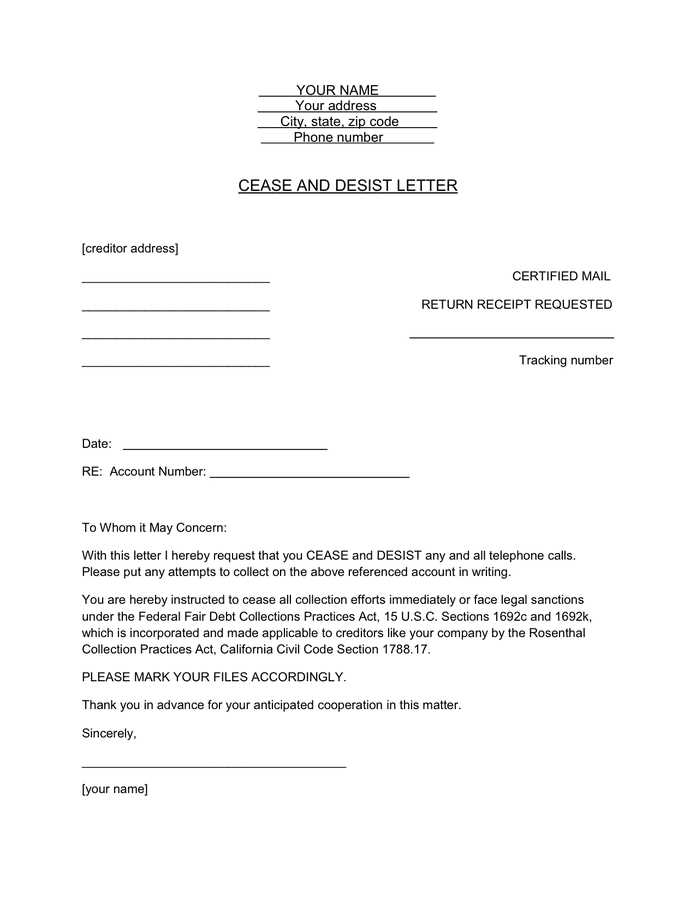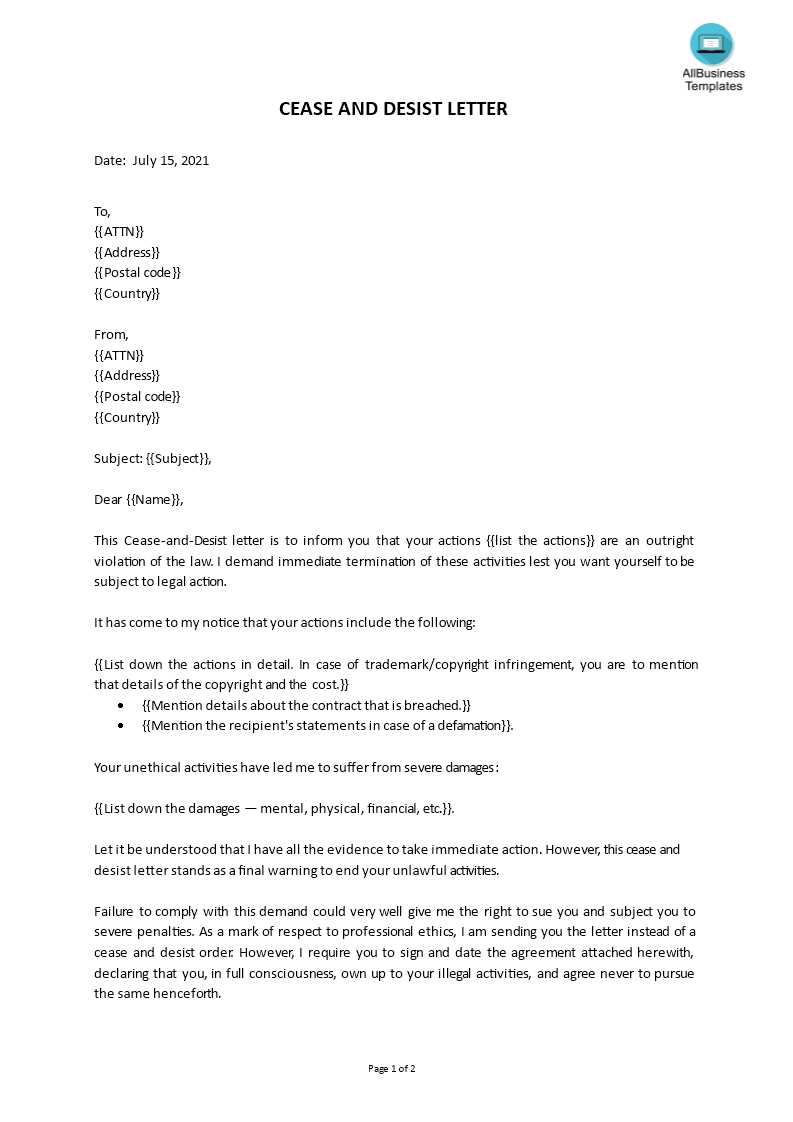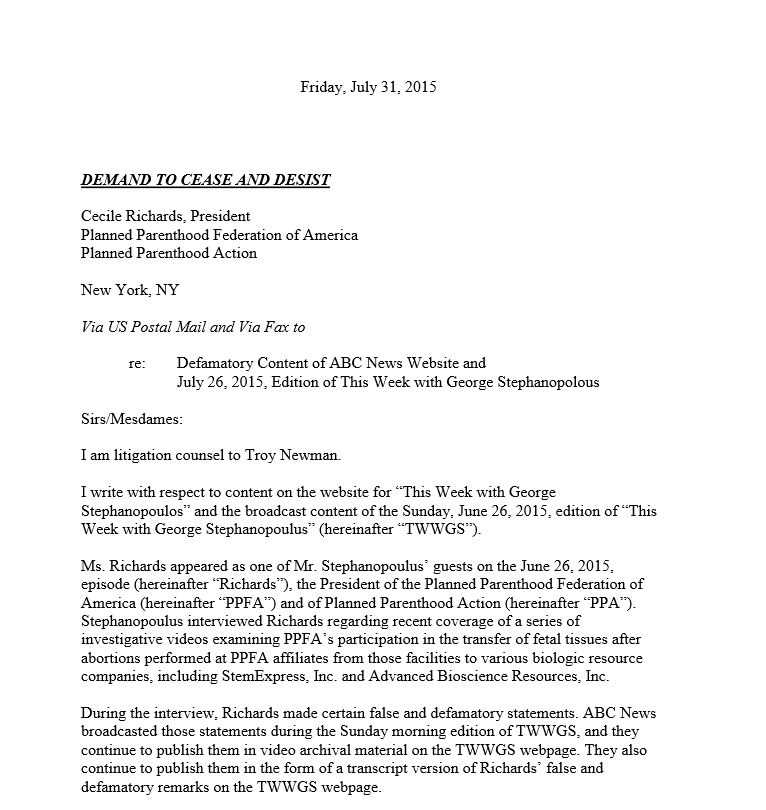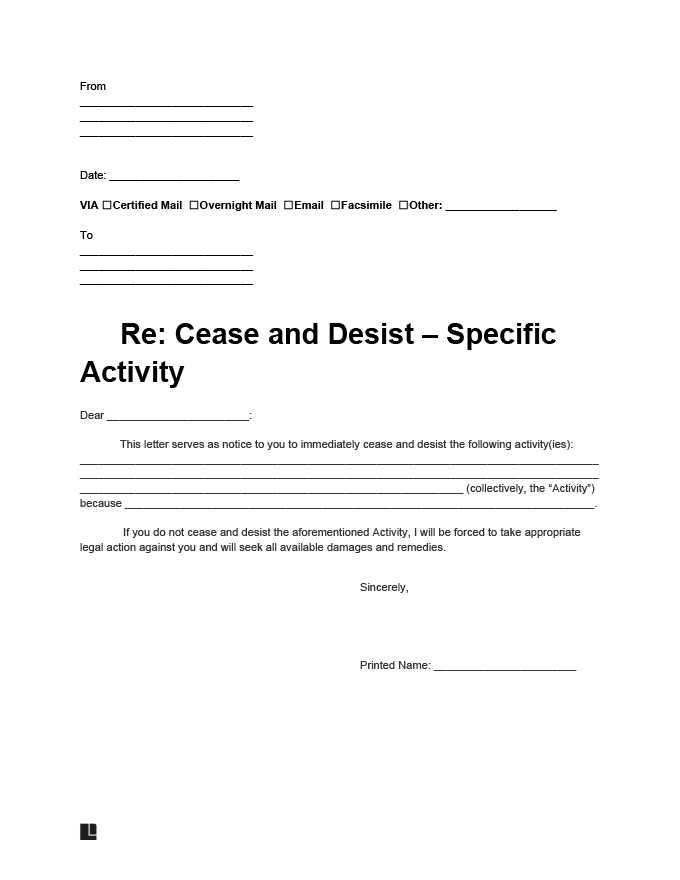Cease and Desist Letter for Defamation in Australia Template

In today’s world, protecting one’s reputation is vital, especially when false statements threaten it. Whether made publicly or privately, such remarks can cause significant harm. When individuals or entities face untrue claims, it’s crucial to know the steps to defend their image effectively.
Taking immediate action is often necessary when dealing with slanderous remarks. By sending an official communication, individuals can demand the cessation of harmful speech, ensuring their rights are respected. This approach is a formal way to request that the false claims cease, offering a legal pathway to resolve disputes.
In this guide, we explore how to craft an official request for action, the legal standing of such communications, and how to use them to protect your interests. Properly addressing these matters can lead to a swift resolution and prevent further harm to your reputation.
Understanding Defamation Laws in Australia
When someone spreads false statements that harm another person’s reputation, it can lead to serious legal consequences. In many cases, individuals have the right to take action against those who make such damaging remarks. The legal system provides avenues for individuals to protect their reputation and seek justice when false accusations are made.
In the context of legal protection, various elements need to be proven for a case to be valid. Understanding the fundamental aspects of these laws is crucial before pursuing any action. These include:
- Falsity of the statement: The statement must be untrue and capable of harming an individual’s reputation.
- Publication: The statement must be made public or communicated to others.
- Harm: The statement must result in actual harm or damage to the person’s reputation.
- Intention: In some cases, the intent behind the statement may also be relevant.
Once these factors are understood, it becomes easier to assess whether legal action is necessary. Additionally, those facing unfounded accusations may want to take steps to prevent further damage. Understanding the legal framework is essential in deciding how best to proceed in such situations.
What is a Cease and Desist Letter
In situations where someone makes harmful or false statements, individuals often choose to take formal action to prevent further damage. One way to address this is by sending a formal communication demanding that the individual stop making such statements. This type of communication serves as a warning, urging the person to halt their actions and avoid legal consequences.
Such documents typically outline the specific behavior being challenged, the legal grounds for the claim, and the potential repercussions if the behavior continues. Here is a basic breakdown of the contents of such a communication:
| Section | Description |
|---|---|
| Introduction | Identifies the parties involved and provides a brief overview of the situation. |
| Nature of the Complaint | Details the specific actions or statements that are being contested. |
| Legal Basis | Explains the legal rights violated and the consequences if the actions continue. |
| Demands | Clearly requests the individual to stop the behavior and outlines a timeframe for compliance. |
| Consequences | Describes the potential legal actions that may follow if the demands are ignored. |
By issuing such a formal request, individuals can take the first step in resolving the issue before escalating it further. These communications not only help in asserting one’s rights but also provide a clear record should legal proceedings become necessary.
When to Send a Cease and Desist
There are instances when taking action against harmful remarks becomes necessary to protect one’s reputation and legal rights. If false statements or actions continue to harm a person’s image, it may be time to intervene. Recognizing the right moment to act is crucial in preventing further damage and establishing control over the situation.
Sending a formal notice can be an important first step when other attempts to resolve the matter have failed. It can be used when:
- The individual or entity refuses to stop making damaging claims despite prior requests.
- The harmful statements are causing significant emotional, financial, or social harm.
- The statement is widely shared and continues to circulate, affecting one’s public image.
- There is a clear legal basis for the claim that the actions are unlawful or damaging.
By sending a formal demand to stop, individuals can assert their position and seek a resolution without the immediate need for litigation. However, timing and the specific circumstances surrounding the case are essential factors to consider in determining whether this is the best course of action.
Key Elements of a Defamation Letter

When addressing harmful or false statements, it is essential to ensure that any formal communication is clear, precise, and legally sound. A well-crafted document can help convey your concerns effectively and outline the necessary steps to resolve the issue. The following are the primary components of such a document:
Introduction and Background
The initial part of the document should introduce the parties involved and provide a brief overview of the situation. This section typically includes the date of the harmful statements, the context in which they were made, and a description of how they have negatively impacted the individual’s reputation or well-being. It sets the tone for the entire communication.
Specific Demands and Legal Grounds
Once the background is established, it’s crucial to outline the demands being made. This includes asking the recipient to stop making the harmful statements and take corrective actions if necessary. The legal justification for such demands should also be presented. This may involve referencing relevant laws and regulations that have been violated by the actions in question.
In addition, this section often includes a clear timeframe for compliance and a description of potential consequences if the demands are not met. It is essential that the communication is direct, providing all necessary information to allow the recipient to understand both the legal basis and the seriousness of the request.
How to Write an Effective Letter

When crafting a formal communication to address harmful statements, it’s crucial to ensure that the message is clear, professional, and legally sound. A well-written document can effectively convey your position, outline the necessary actions, and encourage the recipient to take corrective measures without unnecessary escalation. Here are some key steps to writing an effective communication:
1. Be Clear and Direct: Begin by stating the purpose of your message upfront. Avoid ambiguity and get straight to the point, outlining the problematic behavior or statements clearly. The recipient should understand exactly what the issue is and what you are requesting from them.
2. Maintain a Professional Tone: While it’s important to express your concerns, it’s equally important to remain composed and respectful. Keep the tone of the communication formal and neutral to avoid escalating the situation unnecessarily.
3. Provide Supporting Details: Back up your claims with specific examples, including dates, locations, and any other relevant information. Providing concrete evidence strengthens the credibility of your claims and helps the recipient understand the seriousness of the issue.
4. Outline Your Expectations: Clearly state what actions you want the recipient to take. Whether it’s stopping specific behaviors or issuing an apology, outline your expectations in a concise manner. Specify any deadlines or timeframes for compliance.
5. Mention Potential Consequences: While it’s important to keep the tone professional, you should also make it clear that there are legal ramifications if the requested actions are not taken. This could include potential court action or further legal measures.
By following these guidelines, you ensure that your message is impactful, professional, and more likely to result in the desired outcome.
Enforcing Legal Rights After Sending
After sending a formal notice, it’s essential to understand the next steps to ensure your legal rights are upheld. If the recipient fails to comply with your request, you may need to take further actions to protect your reputation or legal standing. The process of enforcement involves assessing the situation, gathering evidence, and potentially pursuing legal avenues.
Reviewing Compliance
The first step is to assess whether the recipient has adhered to your demands. This may involve checking if the harmful statements have ceased, any retractions or apologies have been made, or the requested corrective actions have been taken. If the recipient complies, the matter may be resolved without further action.
Taking Further Legal Action

If the recipient refuses to comply or ignores your request, you may need to take further steps. This could involve seeking legal advice to determine whether court action or other remedies are necessary. Legal options may include filing a lawsuit, seeking damages, or requesting an injunction to prevent further harm.
Enforcing your legal rights after sending a formal request ensures that your position is protected and that necessary steps are taken to address the issue effectively. Legal professionals can guide you through this process to achieve the desired outcome.